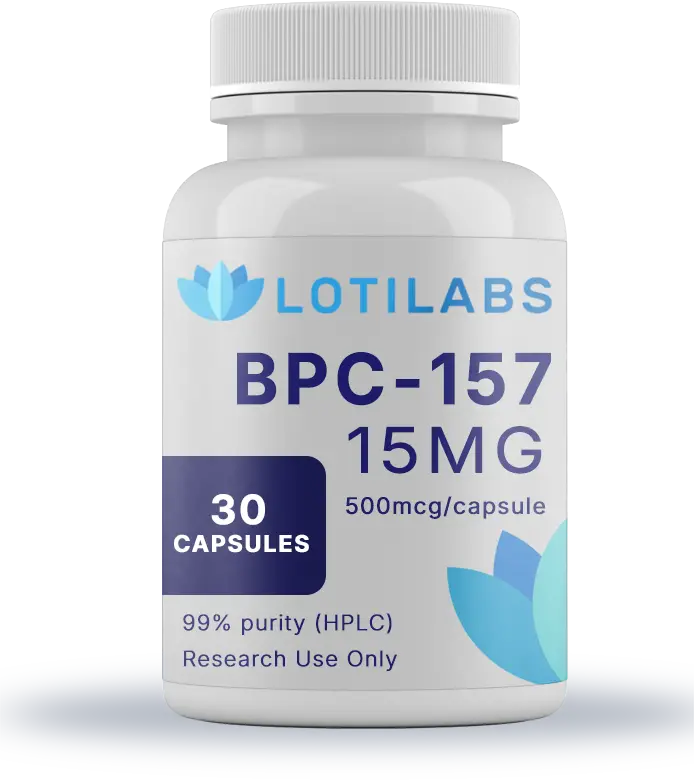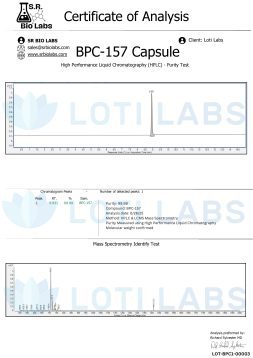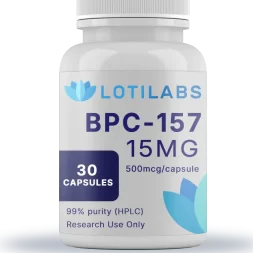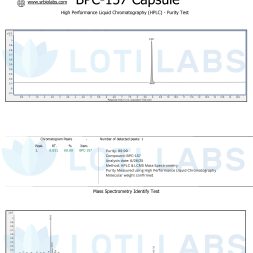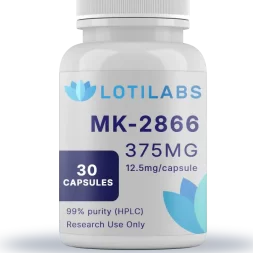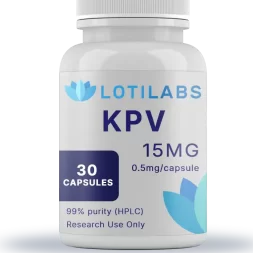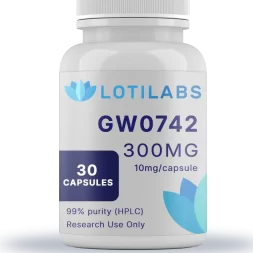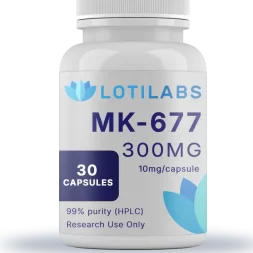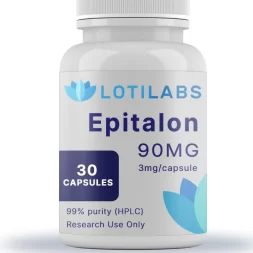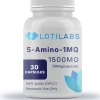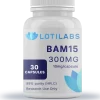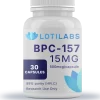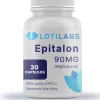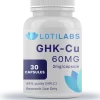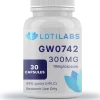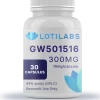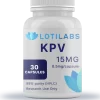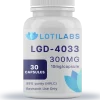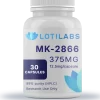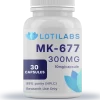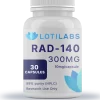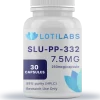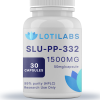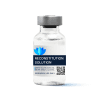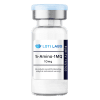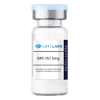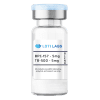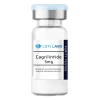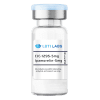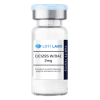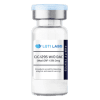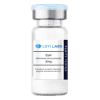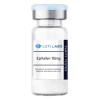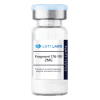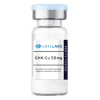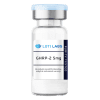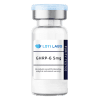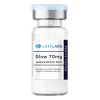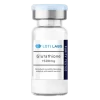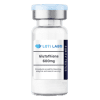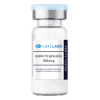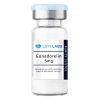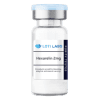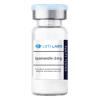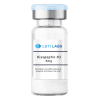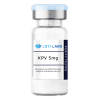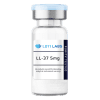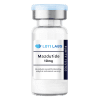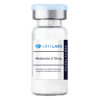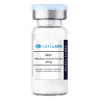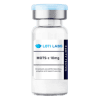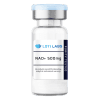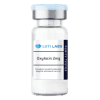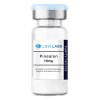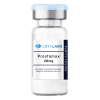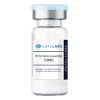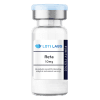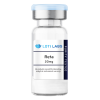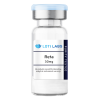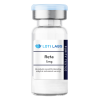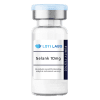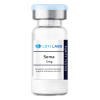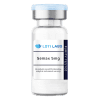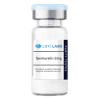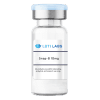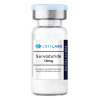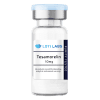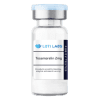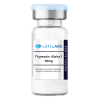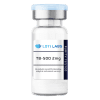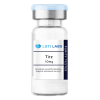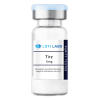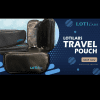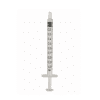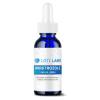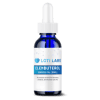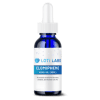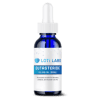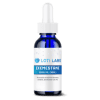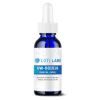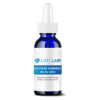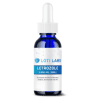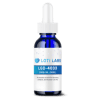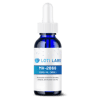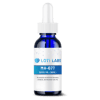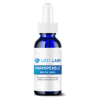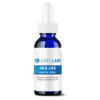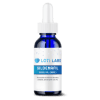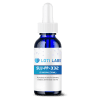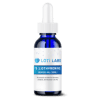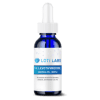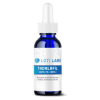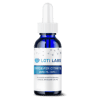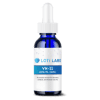BPC-157 Capsules (500mcg/capsule, 30 capsules)
$69.99
You save
Capsules are for laboratory, research, analytical, and measurement purposes only. Capsules offer a protective barrier between sensitive chemical compounds and environmental elements, such as moisture. Not for human consumption or veterinary use.
In stock

Buy BPC 157 Capsules: Clinical-Grade Peptides for Lab Use
In the world of peptide research, BPC 157 has gained a lot of attention from scientists studying tissue repair and cellular processes. This synthetic peptide is derived from a protein found in human gastric juice and is a great tool for researchers to study various biological pathways. When looking to buy BPC 157 capsules for lab use, understanding the molecule, research applications and quality standards is crucial for scientific integrity.
Molecular Structure of BPC 157
BPC 157, also known as body protection compound 157, has a precise molecular structure that defines its research utility. This synthetic pentadecapeptide consists of 15 amino acids in a specific sequence that researchers have identified through extensive research.
Technical Specifications:
- Amino Sequence: Synthetic pentadecapeptide derived from body protection compound found in human gastric juices
- Molecular Formula: C62H89N15O17
- Molecular Weight: 1419 g/mol
- PubChem CID: 9941957
- CAS Number: 137525-51-0
The molecule’s stability and research applications come from this exact chemical composition. Research shows that the peptide’s structure is involved in its interactions with various cellular mechanisms making it useful for cell and tissue research.
Mechanism of Action in Lab
Lab studies have shown how BPC 157 works through multiple biological pathways. Research shows the compound supports collagen synthesis mechanisms which is relevant for joint health and musculoskeletal soft tissue healing processes.
The peptide seems to enhance blood vessel formation through VEGF and NO signaling pathways. These mechanisms have attracted researchers studying blood flow restoration and new blood vessel formation in animal models. Animal studies show the compound may affect growth hormone receptor expression and support the body’s natural healing process at the cellular level.
Advanced formulations have arginate salt configurations to increase stability during storage and handling. SNAC (Stable Nano-Active Carrier) technology helps researchers study bioavailability by protecting the peptide from stomach acid degradation in experimental protocols.
Research Studies and Applications
Scientific literature has various research applications for BPC 157 across multiple biological systems. Studies on tendon healing and ligament healing have used this compound to study tissue regeneration. Research shows enhanced collagen synthesis in animal models which leads to better functional outcomes in tissue repair studies.Gastrointestinal research is another area of interest. Researchers have studied the compound’s effect on gut health and digestive function in lab settings. Research shows potential applications for gastric and duodenal lesions induced in animal models, gut lining integrity and gastrointestinal healing.
Standard Research Protocols:
- Typical administration: 500mcg twice daily in experimental studies
- Tissue response evaluation periods vary by research objectives
- Cell proliferation and cell migration studies use various concentrations
- Wound healing research examines granulation tissue formation
Other research areas include brain gut axis, central nervous system applications, inflammatory bowel disease models. Researchers have studied the compound’s role in neurological support research and chronic inflammation in controlled lab settings.
Storage and Safety
Proper handling and storage protocols are crucial when working with BPC 157 capsules. The compound requires cool, dry storage to maintain molecular stability throughout research. Lab personnel should follow established protocols for peptide therapy research to get consistent results.
Research shows BPC 157 is undetected in standard screening procedures, but athletic organizations may have varying policies on peptide supplementation research. Independent testing for endotoxins and sterility ensures safety during tissue research.
Quality research facilities have storage guidelines that preserve the compound’s effectiveness for cell survival studies, muscle recovery research and tissue injury research. Environmental controls prevent degradation that can affect experimental outcomes.
Why Buy from Loti Labs
Each product undergoes molecular sequence verification and lab analysis to ensure research grade quality. This attention to detail is for researchers studying growth factors, growth hormone receptors and vascular health in controlled lab settings.
The various formulations allow researchers to design their experiments based on their research objectives, whether studying blood vessel function, promoting healing or reducing inflammation in animal models.
Research Use Only
All products sold by Loti Labs are research chemical only. This means use is limited to in-vitro lab testing and experimentation purposes only. Human or veterinary use is strictly prohibited under these guidelines.
These compounds are not pharmaceutical substances, food products or cosmetic materials and should not be mislabeled or misused for such purposes. The research only designation ensures compliance with regulations while supporting legitimate scientific research into peptide mechanisms and cellular processes.Researchers in life sciences, tissue research and physical recovery studies must follow protocols consistent with lab research standards. This framework supports joint support research, soft tissue research and muscle soreness studies in controlled environments.
Shipping and Distribution
Loti Labs has efficient distribution systems for research institutions that need lab materials quickly. Same day shipping for orders placed before 1 PM EST Monday-Friday and weekend orders ship the following business day.
The company has been established since 2019 and manufactures USA made peptides with dedicated customer support for research. This consistency is crucial for researchers to meet experimental timelines and have continuous access to research materials.
Distribution protocols accommodate the specific handling requirements of peptide research compounds and maintain temperature controls and packaging standards throughout the shipping process.
Quality Assurance and Testing
Every batch of BPC 157 capsules is tested by third party using High-Performance Liquid Chromatography (HPLC) to verify product purity and molecular accuracy. This comprehensive testing ensures each research batch meets the quality standards for scientific use.
Manufacturing is done in FDA registered facilities with proper quality control protocols. These standards guarantee research grade consistency and reliability across all product batches for reproducible results in various research settings.
Testing includes:
- Molecular sequence verification
- Purity analysis by HPLC
- Endotoxin level testing
- Sterility testing
- Stability testing under various conditions
These quality measures support researchers studying complex biological processes, from gut health mechanisms to new blood vessels formation in animal models.
Satisfaction Guarantee and Supplier Selection
Loti Labs offers 30 day satisfaction guarantee on all research purchases. Unopened products can be returned for full purchase price refund. We are confident in our product and customer satisfaction.
When selecting suppliers for research peptides, researchers should avoid vendors without third party testing certificates, those that offer unusually low prices that may indicate quality compromise or suppliers that make exaggerated claims about the compound. Reliable suppliers focus on quality documentation, proper storage protocols and compliance with research only guidelines.
Key supplier evaluation criteria include testing transparency, manufacturing standards, storage and shipping protocols and compliance with research chemical distribution regulations.
Conclusion
For researchers studying tissue regeneration, wound healing and cellular mechanisms, choosing the right source to buy BPC 157 capsules requires careful consideration of quality standards, testing procedures and supplier reliability. The compound has documented applications in studying collagen synthesis, blood vessel formation and tissue repair processes so it’s useful for various research applications.Reliable suppliers like Loti Labs offer full testing, multiple formulations and consistent manufacturing standards for scientific integrity. Whether you’re studying joint pain mechanisms, digestive discomfort pathways or vascular integrity processes, access to verified research grade peptides ensures experimental validity and reproducible results in lab settings.
Researchers should look for suppliers that demonstrate quality through third party testing, proper storage protocols and clear research only positioning when choosing peptide sources for their research.
References
- Chang, C.-H., Tsai, W.-C., Hsu, Y.-H., & Pang, J.-H. S. (2011). The promoting effect of pentadecapeptide BPC 157 on tendon healing involves tendon outgrowth, cell survival and cell migration. Journal of Applied Physiology, 110(3), 774–780. https://doi.org/10.1152/japplphysiol.00945.2010
- Gwyer, D., Wragg, N. M., & Wilson, S. L. (2019). Gastric pentadecapeptide body protection compound BPC 157 and its role in accelerating musculoskeletal soft tissue healing. Cell and Tissue Research, 377(2), 153–159. https://doi.org/10.1007/s00441-019-03016-8
- Sikiric, P., Seiwerth, S., & Cesarec, V. (2017). Stable gastric pentadecapeptide BPC 157 is an anti-ulcer peptidergic. Peptides, 67, 14–18. https://doi.org/10.1016/j.peptides.2015.03.020
- Jakša Vukojević, B., Vrdoljak, B., Malekinušić, D., et al. (2020). The effect of pentadecapeptide BPC 157 on hippocampal ischemia/reperfusion injuries in rats. Brain and Behavior, 10(8). https://doi.org/10.1002/brb3.17265. Chang, C.-H., Tsai, W.-C., Hsu, Y.-H., & Su Pang, J.-H. (2014). Pro-angiogenic BPC 157 is associated with VEGFR2 activation and up-regulation. Journal of Molecular Medicine, 95(3), 323–333. https://doi.org/10.1007/s00109-016-1488-y
- Sikiric, P., Seiwerth, S., Rucman, R., et al. (2012). Ulcerative colitis: focus on stable gastric pentadecapeptide BPC 157. Current Medicinal Chemistry, 19(1), 126–132. https://doi.org/10.2174/092986712803414015
- Vukojević, J., Milavić, M., Perović, D., et al. (2022). BPC 157 and the central nervous system. Neural Regeneration Research, 17(3), 482–482. https://doi.org/10.4103/1673-5374.320969
- Xu, C., Sun, L., Ren, F., et al. (2020). Preclinical safety evaluation of body protective compound-157, a potential drug for treating various wounds. Regulatory Toxicology and Pharmacology, 114, 104665. https://doi.org/10.1016/j.yrtph.2020.104665
- Stanford, J. (2024, June 20). NSAIDs Fact Sheet: Uses, Benefits, Risks, and More. Rupa Health. https://www.rupahealth.com/post/nsaids-fact-sheet
- Cleveland Clinic. (2022). What is Angiogenesis? Retrieved from https://my.clevelandclinic.org/health/articles/24206-angiogenesis
| Weight | .06250 lbs |
|---|
